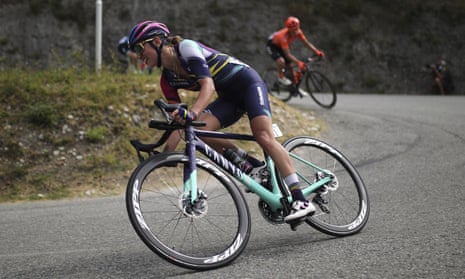The Tour de France organiser, Christian Prudhomme, has confirmed to the Guardian that there will be a women’s race in 2022 and that it will be held after the men’s Tour. Further details will be confirmed in October, around the time that the men’s Tour is usually launched.
“It will take place next year, that’s certain,” Prudhomme said. “It would have happened this year if it had not been for the Covid-19 pandemic, obviously, and above all if the Tokyo Olympics had not been after the [men’s] Tour, so the best riders may not be available. But the decision has been taken. There will be a Tour de France femmes in 2022 following closely after the [men’s] Tour.”
While not revealing details of a possible route or length for the race, Prudhomme made it clear that the race, which is run by Amaury Sport Organisation, will have its own identity, “linked to the past and present of the Tour de France, and – why not? – perhaps the future as well”.
He was also keen to make the point that there has already been a women’s Tour de France, from 1984 to 1989, and that the upcoming race must learn the lessons from the failure of that event.
“In my view, you have to put to one side the idea of parity between men and women. Why? Because there was a reason why that race only lasted for six years, and that was a lack of economic balance. What we want to do is create a race that will stay the course, that will be set up and stand the test of time. What that means is that the race cannot lose money.

“Today, all the women’s races that we organise lose us money. Even so, we’ve been running Flèche Wallonne, Liège-Bastogne-Liège, La Course by Le Tour. There was the Tour of Yorkshire and the Tour de Qatar Feminin, there will be Paris-Roubaix in October. If it makes money, that’s great, but it mustn’t lose money or it will end up like the Tour in the 80s and it will die.
“If that balance had been achieved then, we would be on our 35th women’s Tour now. The challenge is to set up a race that can live for 100 years. That’s why we want it to follow the men’s Tour, so that the majority of the channels which broadcast the men’s Tour will cover it as well.”
For Prudhomme, the women’s Tour will also need to take into account the fact that “women’s cycling has a very high level, but it’s more disparate”. He said: “Men’s cycling has a high level, and is more at the same level. For a men’s organiser, that’s tough – you need steeper climbs all the time, harder climbs and so on.
“To run a women’s race is more simple, you don’t need 50 hyper-steep climbs, you can be more natural about it. Women’s cycling is far less controlled than men’s. I can tell you there will be links with the past, with the present, and perhaps the future on the route of the [women’s] Tour.”
